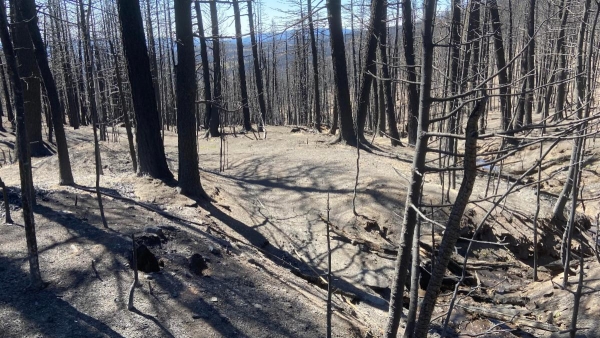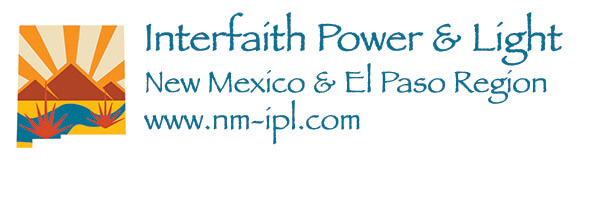The following piece appeared in the May 26 issue of Noticias de las Acequias newsletter, published by the New Mexico Acequia
(Courtesy of Paula Garcia, executive director)

The watershed that feeds the Canoncito and Encinal acequias in Mora County following the Hermits Peak-Cow Calf Fire. Photo credit: Zach Bumgarner
Across the state, thousands of families have been impacted by devastating wildfires. We are facing immediate concerns over safety, survival and displacement, and also long term worries about our watersheds, forests, fields, and homes.
“We will forever measure our lives as ‘before the fire’ and ‘after the fire,” New Mexico Acequia Association Executive Director Paula Garcia has written about her first-hand experience with the catastrophic wildfires impacting land-based communities in northern New Mexico. In an article published on May 7 in The New Mexican (Santa Fe), she describes the immeasurable impacts to a beloved landscape and a way of life in the mountain communities of Mora and San Miguel counties.
Acequia leaders in the affected communities are tirelessly working to respond to the impacts of fire on watersheds and the threat of flooding by engaging with the USFS, NRCS, counties, and SWCDs to include acequias in the mapping and planning process to address fire and flood impacts. In the coming weeks and months, NMAA will report regularly on our work to recover and heal our beloved lands and our families from the trauma of wildfire. To get current updates all the various fires in New Mexico, including McBride, Cerro Pelado, Cooks Peak, and Hermits Peak/Cow Calf, please visit Inciweb and click on the fire icons to learn more about the status of each wildfire.
New Mexico Acequia Association and partners will work to support families and communities in post-wildfire recovery. Mindful that recovery and healing from a disaster on a large scale will take years, this project seeks to make long-term commitments to families and communities to rebuild their generational farms and ranches as well as to reimagine their beloved places to be equitable and resilient. Our work will be grounded in the values embodied in querencia, love of place and community, and we will dedicate ourselves to healing and building communities where land-based families can thrive for generations to come.
While the NMAA makes progress on building our vision, programs, and projects for recovery, we are sharing the following information resources that are helpful in addressing wildfire impacts:
After Wildfire New Mexico Guide for Communities
This guide was created to help communities organize and respond to wildfire and subsequent flooding. The guide contains safety information, flood information, state and federal agency resources and contacts for assistance, ways to mobilize your community, and financial and funding tips for communities and families. It is intended to provide useful guidance through a difficult time, and to start you and your community on the road to recovery. If you are reading this before a wildfire occurs, use it to help you plan ahead.
FEMA Assistance
Those affected by the wildfires, either by loss or damage to property or by displacement/evacuation, can apply to FEMA for assistance. To apply for FEMA assistance: call the Helpline 800-621-3362 or visit disasterassistance.gov. The deadline to apply for assistance (property damage, etc.) is July 5, 2022. For miscellaneous expenses up to $500 for evacuees (temporary housing, food, etc.), the deadline has been extended to June 1, 2022.
FEMA Flood Insurance
Those who are potentially impacted by post-fire flooding can apply for flood insurance, which would go into effect after 30 days of purchasing an insurance policy (Governor Lujan Grisham has asked for a waiver of the 30 day period because the federal government is responsible for the start of the wildfire through a prescribed burn). For more information about how to buy insurance, go to the FEMA flood insurance page.
USDA Assistance for Farmers and Ranchers
The Farm Service Agency (FSA) has disaster relief programs that are longer term, which don’t address the immediate emergency but are available to offset costs in restoring agricultural operations. The NMAA will be sharing more details about these programs in the weeks and months to come. In the meantime, interested growers can get familiar with the various programs (click here).
Additional resources are listed on these handouts:


